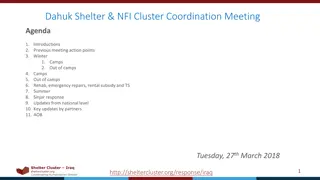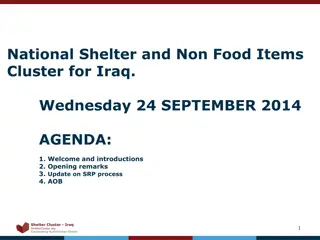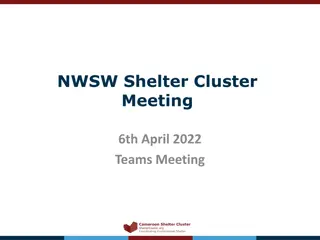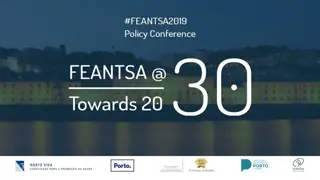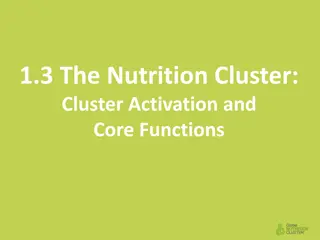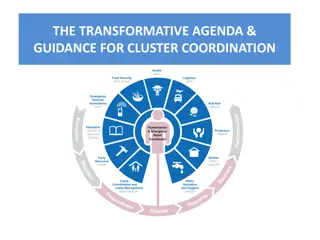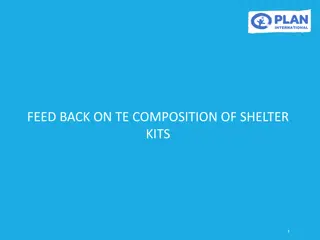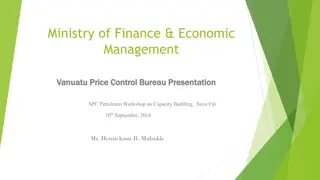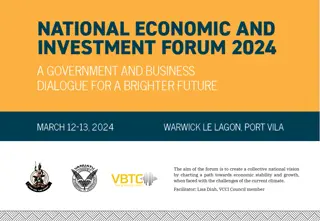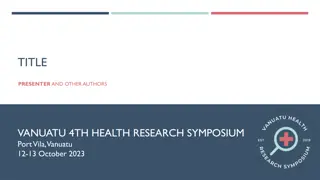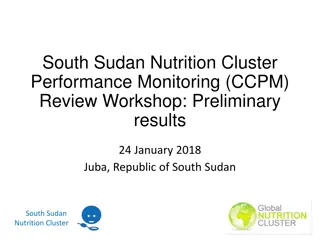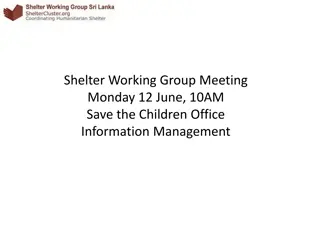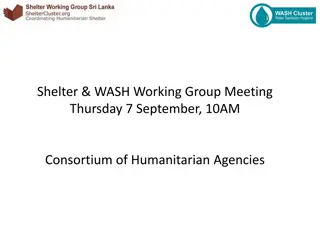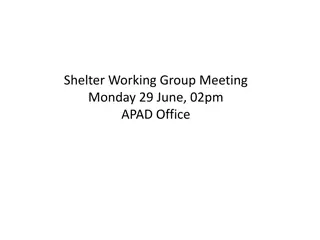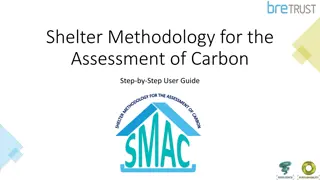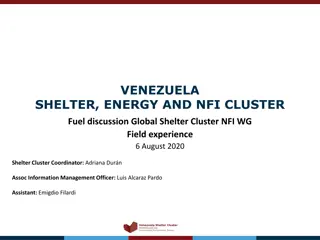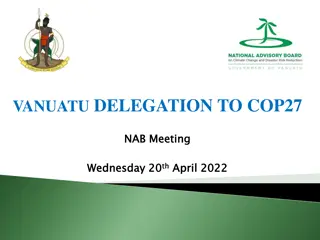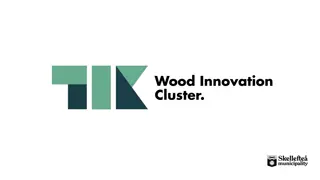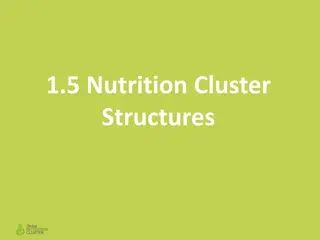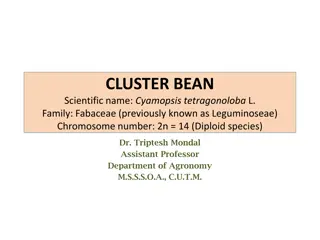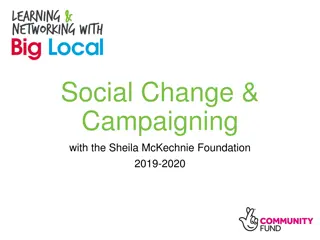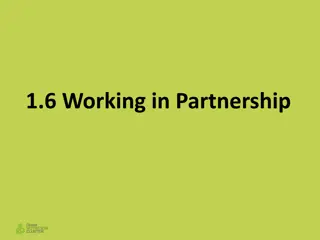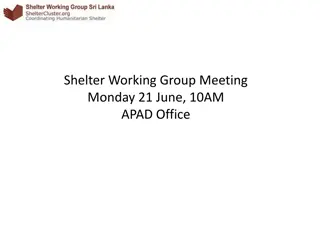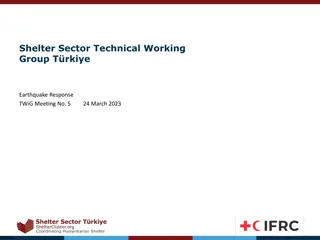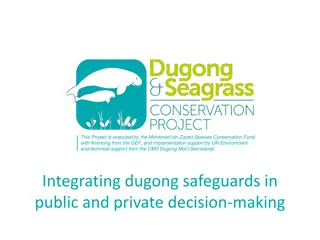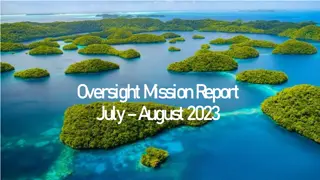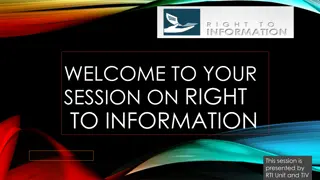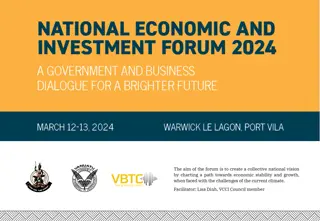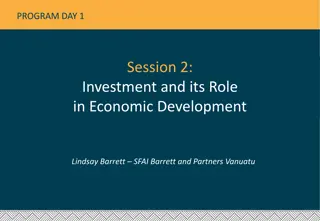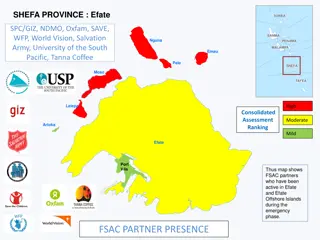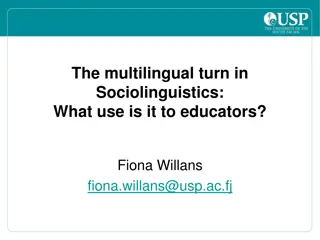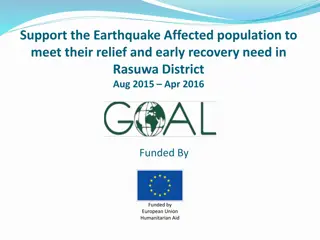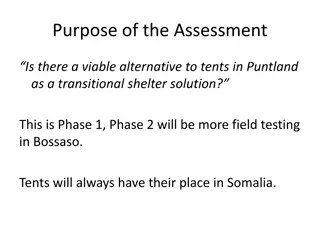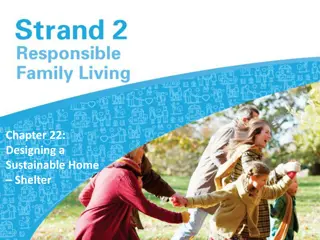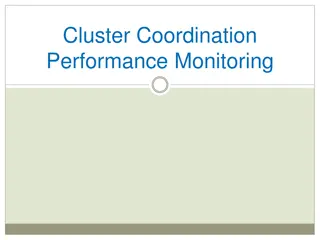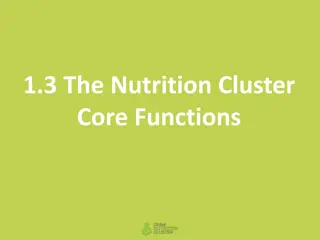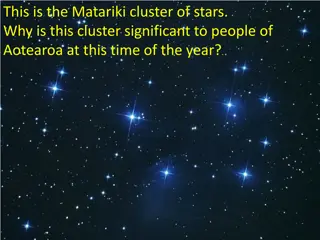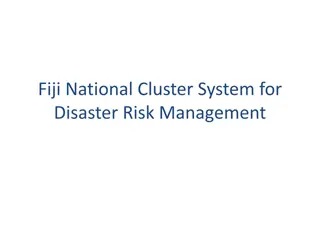Vanuatu Shelter Cluster Meeting Summary and Updates
The Vanuatu Shelter Cluster meeting held on June 18, 2015, at the PWD offices in Port Vila discussed various important topics including feedback from previous meetings and field visits, water supply improvement plans, partner updates, and ongoing distribution activities. The meeting also focused on updating the status of ongoing and planned activities in different regions of Vanuatu. Additionally, upcoming events like the 3W update and lessons learned workshops were highlighted for the next week.
Download Presentation

Please find below an Image/Link to download the presentation.
The content on the website is provided AS IS for your information and personal use only. It may not be sold, licensed, or shared on other websites without obtaining consent from the author. Download presentation by click this link. If you encounter any issues during the download, it is possible that the publisher has removed the file from their server.
E N D
Presentation Transcript
Vanuatu Shelter Cluster meeting 18thJune 2015 PWD offices Port Vila
Agenda 1. Introduction 2. IM update 3. Updates and discussion 1 Feedback from Tanna Shelter Cluster meeting 2 Feedback from Tanna field visit 3 Shelter key messages for CwC 4 Improvement of water supply in Isangel 5 Co-delivery options for rehabilitation 4. Partners update and issues 5. AOB
2. IM update National Distribution -18/06 Distribution Summary as of 18 June HH Reached Column Labels Complete 69822 14242 123 9100 3428 5454 10451 Row Labels Distribution Blanket Hygiene Kit Kitchen set Mosquito Net Shelter Repair Materials Shelter Tool Kit Sleeping mat Solar Lamp Squatting Plate Tarp Water Container Monitoring Shelter Awareness Shelter Reconstruction Activities Grand Total Ongoing Planned Grand Total 3059 10405 300 2503 83286 17045 123 9400 3428 7228 16188 54 3284 1087 25292 157 2210 6262 1101 92859 300 1200 1100 574 4637 54 2628 1087 23098 157 500 3453 656 159 2035 1710 1 1100 13216 2808 1 5868 73775
IM Update Status (from list) (Multiple Items) SUMMARY OF ONGOING & PLANNED ACTIVITIES AS OF 18 JUNE Count of Activity Column Labels Row Labels Ambrym Aneityum Efate Epi Erromango Fortuna Nguna Port Vila Tanna Tongoa Grand Total 1 7 1 2 1 2 1 1 2 7 2 1 24 3 1 4 7 3 6 4 8 5 41 Distribution Blanket Kitchen set Shelter Repair Materials Shelter Tool Kit Solar Lamp Tarp Monitoring Shelter Awareness Shelter Reconstruction Activities Grand Total 1 2 1 1 2 3 2 3 3 1 1 2 1 3 1 1 3 12 1 2 1 1 1 1 3 1 13 2 4 1 2 2
IM Update Next 3W update due Monday, 29 June Great reporting this week, thank you! BBS TWiG next Tuesday, 23 June at 3pm (PWD Office) Finalizing Shelter Cluster key messages Shelter Cluster Lessons Learned to be distributed National Lessons Learned workshop Wednesday & Thursday next week (23 & 24 June)
3.1 Feedback from Tanna Shelter Cluster meeting 21 persons attending from NDMO, Vanuatu Red Cross, French Red Cross, CRATERRE, TVET Program, Education/Health/Agriculture clusters, NDMO, PDO, FM 104, Immigration, World Vision, Care, PWD, Police, PDC, Forestry department Agenda IM update, sharing lessons learned, shelter lessons learned, partners update Key issues: Toolkits gaps and lessons learned
3.1 Feedback from Tanna Shelter Cluster meeting Toolkits gap in West Tanna. 2,877 HH received tarpaulins but no toolkits / Solar lamps / Safe shelter awareness. In Tanna, some agencies distributed 1 toolkit by HH or 1 toolkit for 3 HH While 1 toolkit for each HH would be better, agreement to distribute 1 toolkit for 3HH, BUT with explanation on sharing toolkit. Care international still have up to 200 toolkits. Need to review PAM emergency response to agree on standards for Vanuatu.
3.1 Feedback from Tanna Shelter Cluster meeting Community cyclone shelters. Tafea recent lessons learned workshop shows that: People prefer to have cyclone shelters at community level. Need to reinforce CDC and PDC capacity building There is not sufficient gov. building to work as cyclone shelters. CDC need to identify community building for evacuation centers. Need to support community buildings as evacuation centers, as for traditional Nimaiten .
3.2 Feedback from Tanna field visit Field visits with Vanuatu Red Cross / French Red Cross and CRATERRE. RTC / PDO / Ministry of education / Cultural center. Visited Yakel community Discussion about cyclone PAM impact and how people cope with. A lot of people took refuge in traditional Nimaiten houses, with people gripping structure to help structure resistance.
3.2 Feedback from Tanna field visit Field visits with Vanuatu Red Cross / French Red Cross and CRATERRE. Discussion on emergency shelter response and items use. Seems that 1 toolkit by HH is better due to need for nails and other items, and to cope with some tools as hammer which might broke. On top of standardize toolkit, need to look at adding axe, stone and oil to extend duration of tools. Idea to preposition community toolkits and tarpaulins to help immediate actions.
3.2 Feedback from Tanna field visit Field visits with Vanuatu Red Cross / French Red Cross and CRATERRE. Tarpaulins are good but need to meet standards and guidance to use them. Shelter was the first need as people feared immediate rain as experienced in cyclone. It seems that people had 2 to 3 weeks food reserve, with market quickly open. But food support critical after this period. Tarpaulins are used first for immediate shelter but could be re use after for kitchen, community places, etc
3.3 Shelter key messages for CWC 1. 21,963 of the most affected households have been supported by relief agencies with tarpaulins.
3.3 Shelter key messages for CwC 2. Relief items are only provided to people whose houses have been damaged by Cyclone Pam. If you have questions or concerns, please contact your local or Provincial Government. 3. Shelter agencies work closely with National, Provincial, Municipal Governments, and traditional leaders to assess and fairly distribute shelter items to the most vulnerable people affected by Cyclone Pam. 4. All parties coordinate closely to identify gaps to equitably meet shelter needs.
3.3 Shelter key messages for CWC 5. Shelter agencies provide community awareness on safer shelter repairing and reconstruction 6. Government and agencies encourage wherever possible community resilience and shelter self- recovery, 7. It is important to identify traditional community cyclone houses which resisted well to cyclone PAM 8. To rebuilt your house it is important to learned from traditional knowledge for buildings which resisted well to cyclone PAM
3.3 Shelter key messages for CWC 9. To make your house more resilient to strong winds and cyclone, it is important to: 1) Deeply anchor your house to the ground with strong foundations, 2) Ensure that you have strong connections at all joints the roof material to the roof timbers, the roof to the walls and the walls to the foundations. Strong connections can be made with hurricane straps, rope and vines. 3) Brace between the corners or junctions of your house creating triangles in the walls and roof. 4) Site your house safely by identifying hazards in your location and build as well as you can to resist them, These 4 principles are at the core of community engagement on safe shelter awareness
Shelter intervention survey This survey was open from 1stto 9thJune, with contributions of 11 agencies which represent the majority of agencies involved in shelter recovery activities. UN Habitat - World Vision ADRA - Vanuatu Christian Council - CARE international - IOM CARITAS - Disability Desk; Ministry of Justice and Community Services - The Salvation Army - Save the Children Australia Butterfly Trust A PY Birds'D This survey will remain open till the end of the HAP on 31 July 2015 in order to feed the shelter cluster recovery strategy.
Shelter intervention survey 9. Which type of shelter interventions are you planning or implementing at household level? None Housing repair Land tenure legal assistance Permanent House (construction) Transitional or progressive core Host family support Cash Grants / vouchers Distribution of shelter toolkits Distribution of building material, Distribution of fixings kits 0 1 2 3 4 5 10 on 11 agencies are planning shelter interventions at HH level; 5 agencies in only one response modality.
Shelter intervention survey 10. Which type of shelter interventions are you planning or implementing at community level? None Model house Community building (re)construction, Community building retrofitting, Community building repairing, 0 1 2 3 4 5 6 7 7 on 11 agencies are planning shelter interventions at community building level. 3 agencies in all response modalities.
Shelter intervention survey 11. Which type of community building will you target, if any? None Comunal toilets Comunity building as evacuation center Church Chief hall / nakamal Community hall Kindy 0 1 2 3 4 5 Kindy, Community hall, Chief hall/nakamal and church buildings are equitably targeted by 2 agencies for each.
Shelter intervention survey 12. Which Building Back Better-Safer - activities are you planning or implementing? None Model house Support to Urban Planning and Management through institutional capacity building activities Messaging through other media such as radio or SMS Distribution of posters, flyers and other printed materials Community awareness & mobilization campaigns (Vulnerability and Capacity Assessments, Participatory methodologies on Training for carpenters and other skilled workers Training for self builders Safe Shelter Awareness orientation to beneficiaries Resource centres at community or municipal level 0 1 2 3 4 5 6 7 8 9 8 on 11 agencies include Building Back Better-Safer activities in their strategies.
Shelter intervention survey 15. What is the intended timeframe of your interventions? Beyond April 2016 February to April 2016 November 2015 to January 2016 August to October 2015 May to July 2015 0 1 2 3 4 5 6 7 8 9 At least 7 on 11 agencies will implement activities within Recovery Framework.
Shelter intervention survey 16. Has the funding been secured to cover this target? Partially 36% No 9% Yes 55% 17. Have you already finalized your shelter recovery plan of action and budget? Not finalized 91% Finalized 9% Only 1 on 11 agencies has finalized its recovery plan, and 6 only have secured their funding.
Shelter intervention survey 24. Please select up to three critical technical issues you might face in your shelter recovery programming None Secure funding Availability of contractors to carry out construction of Trainings Beneficiary communication and community engagement Logistic and material delivery Site access Techn. and com. guidance for BBB&S shelter awareness Techn. Guid. / standards on engineered solutions Accessibility Environmental impact Debris recycling and timber milling WASH for shelter Housing, land and property rights framework 0 1 2 3 4 5 6 7 Logistic and material delivery is first critical challenge (6), then trainings and beneficiary communication and community engagement (4).


